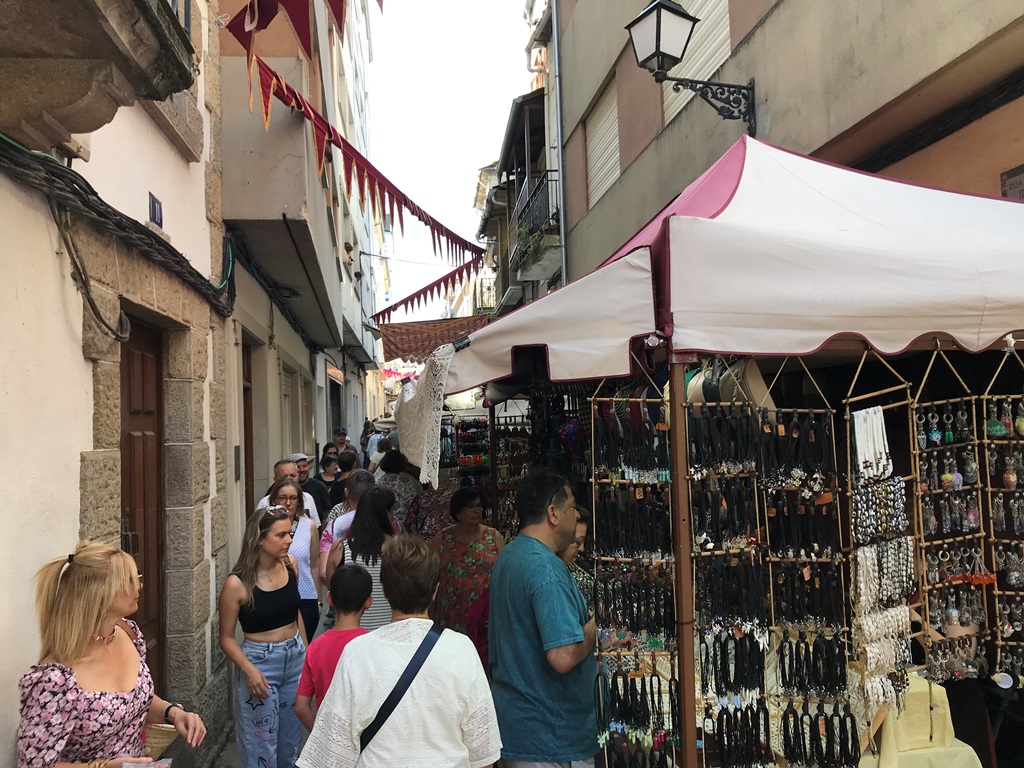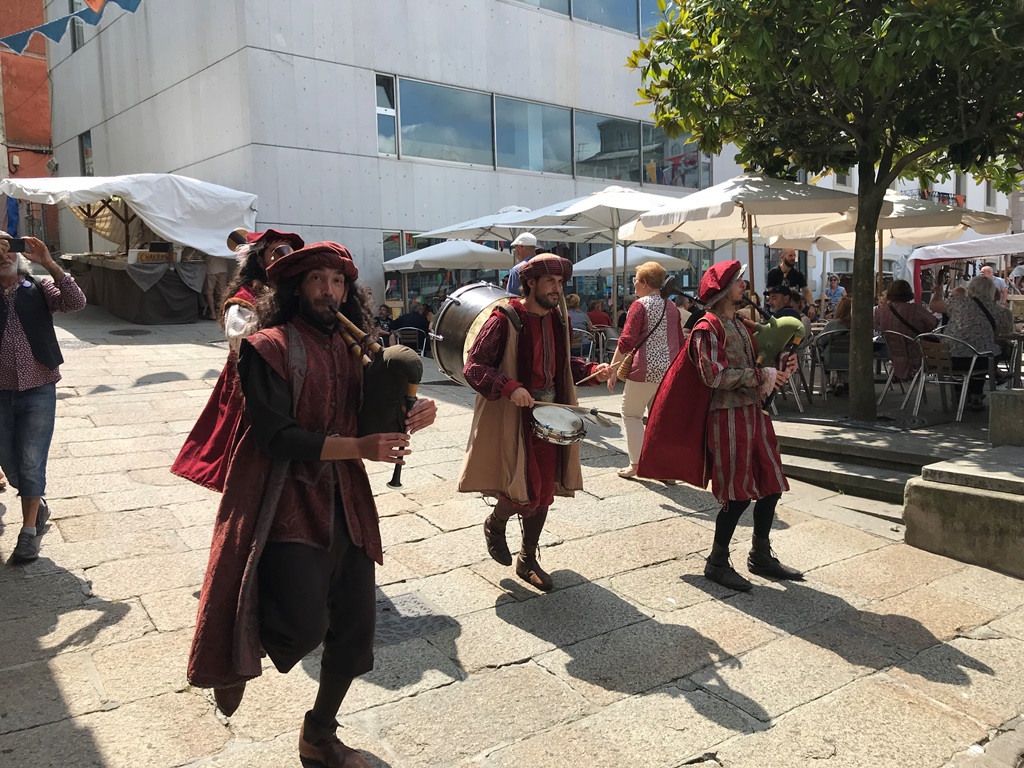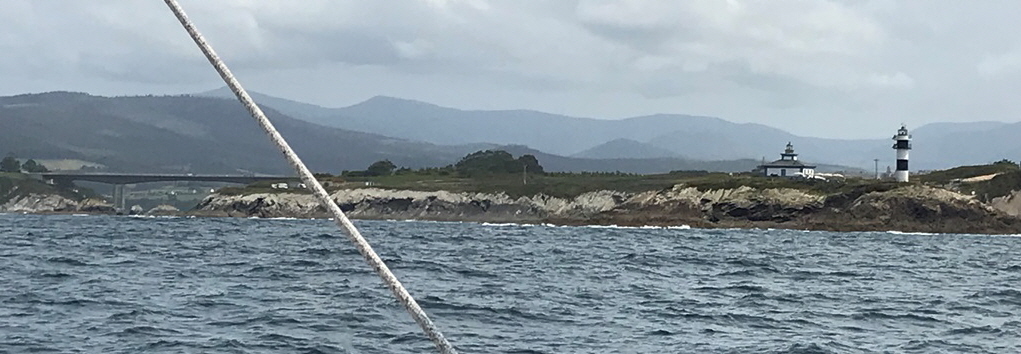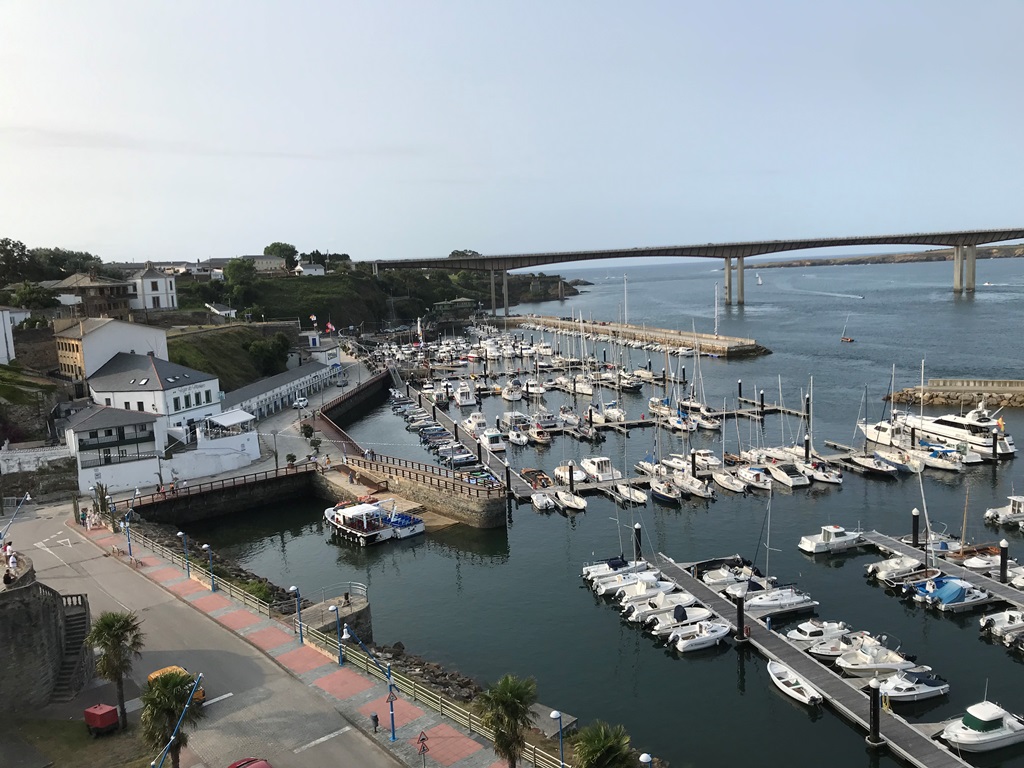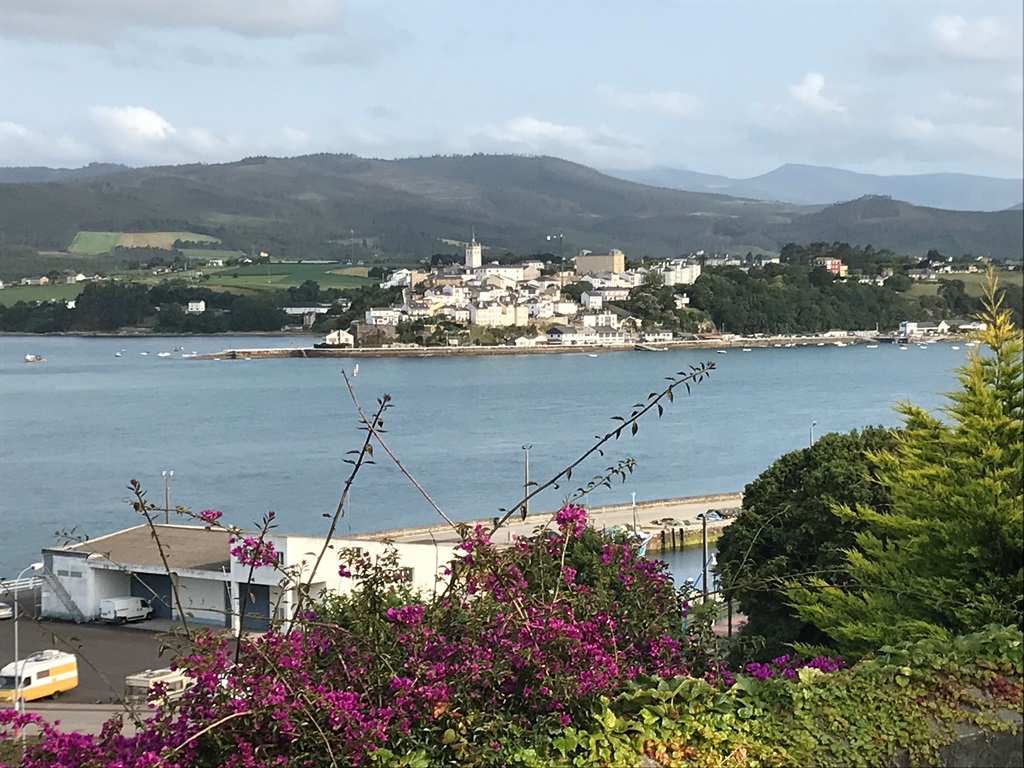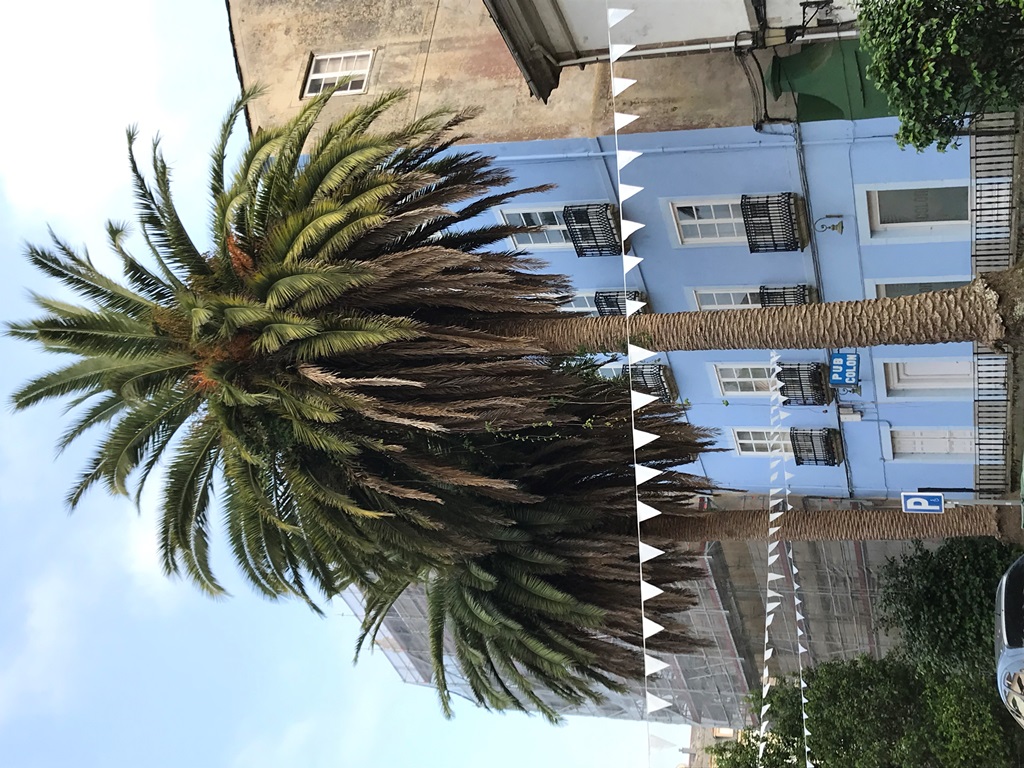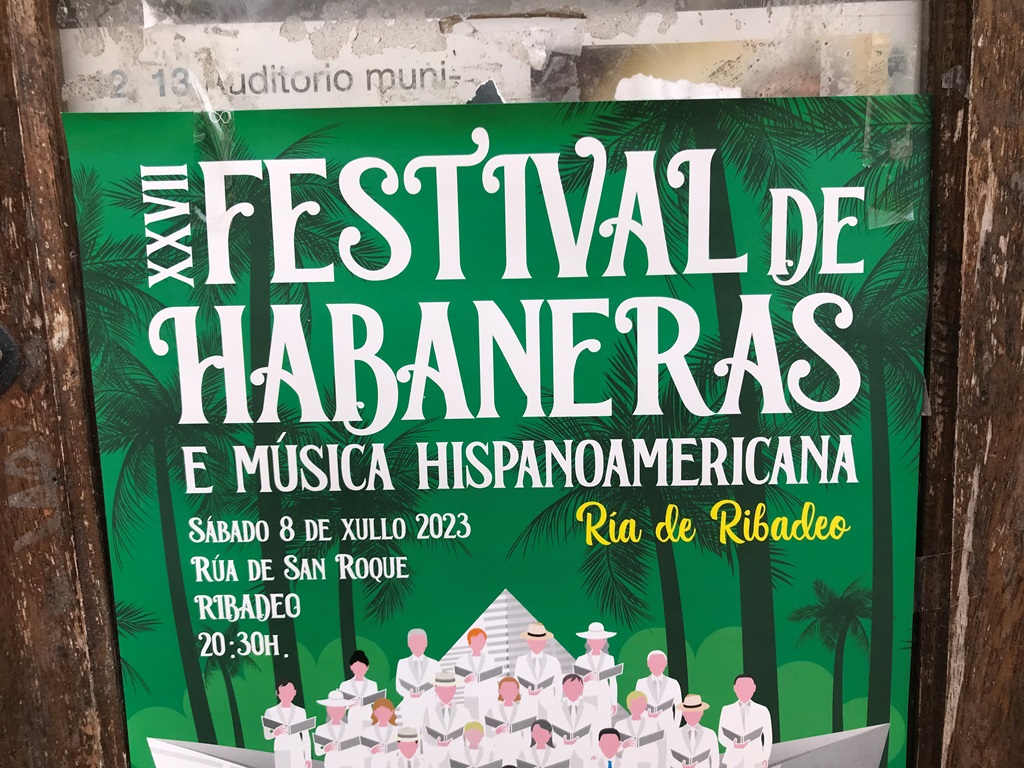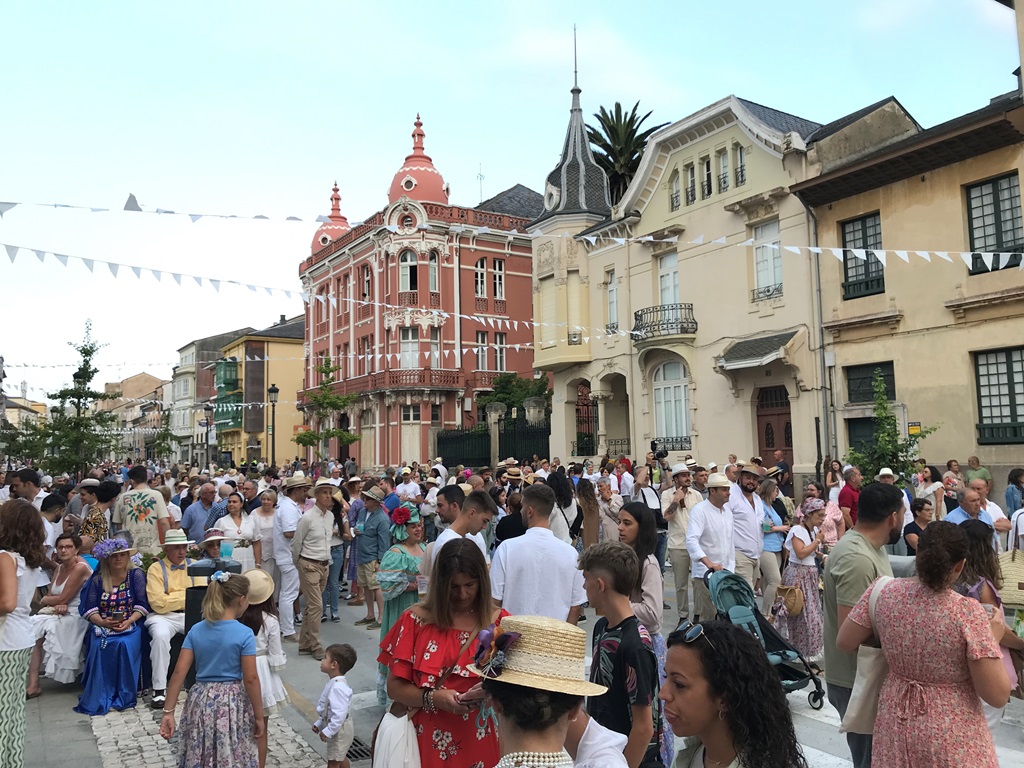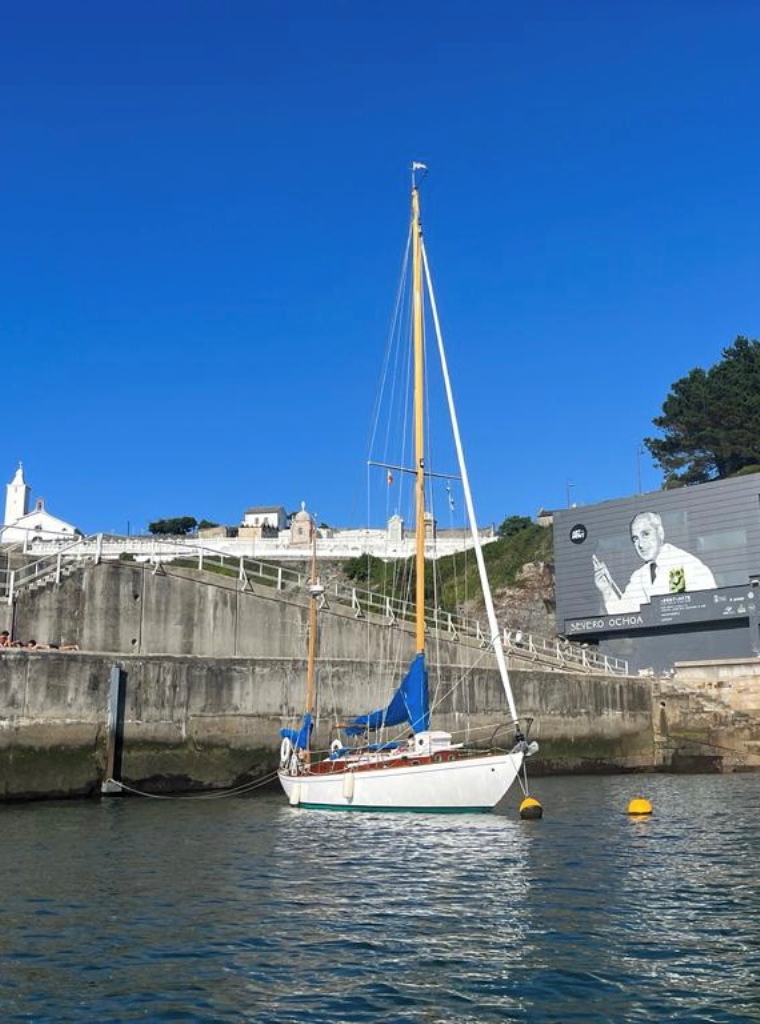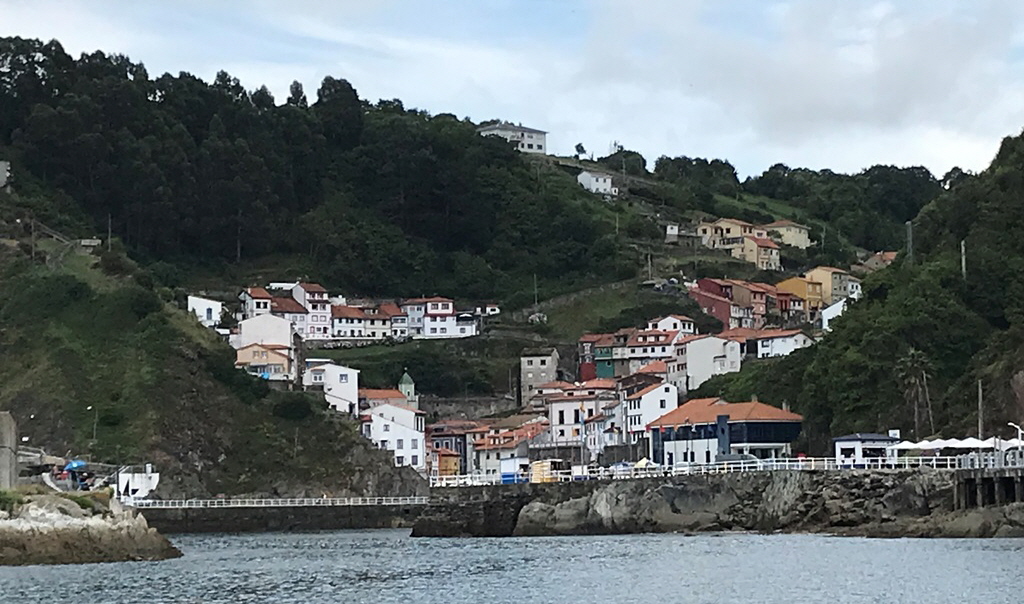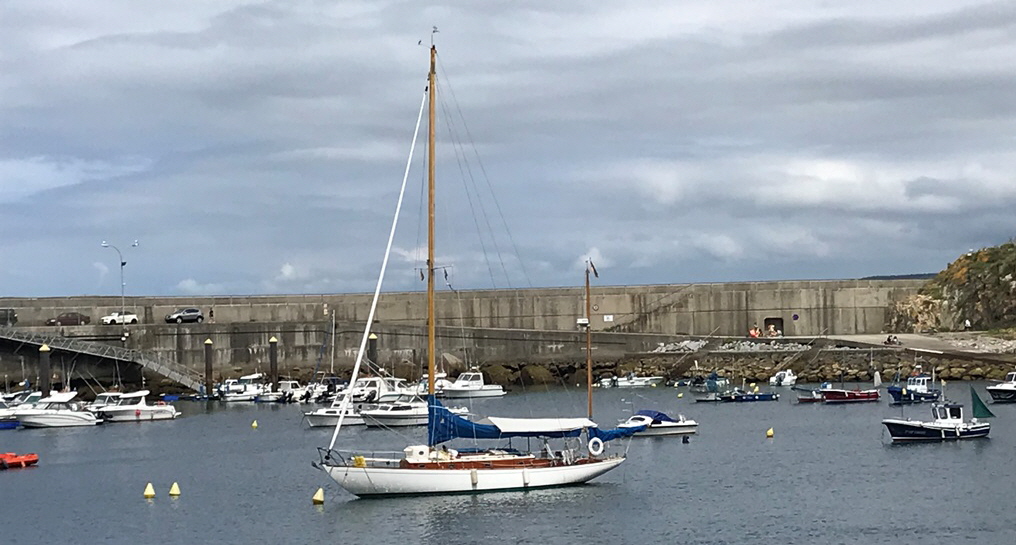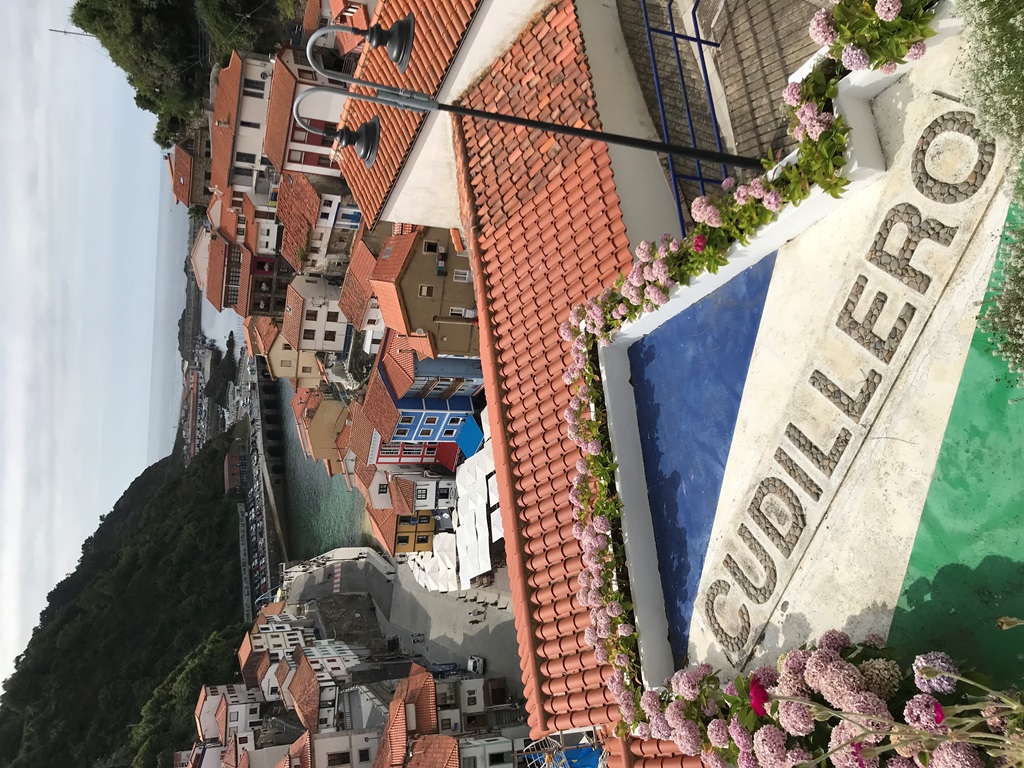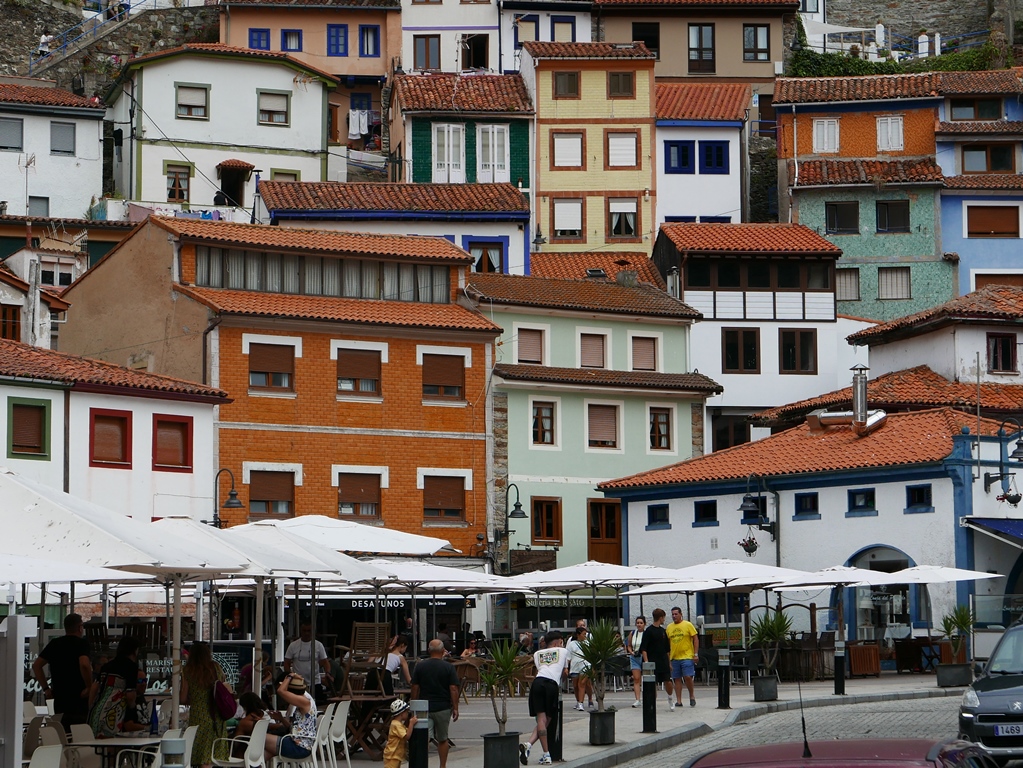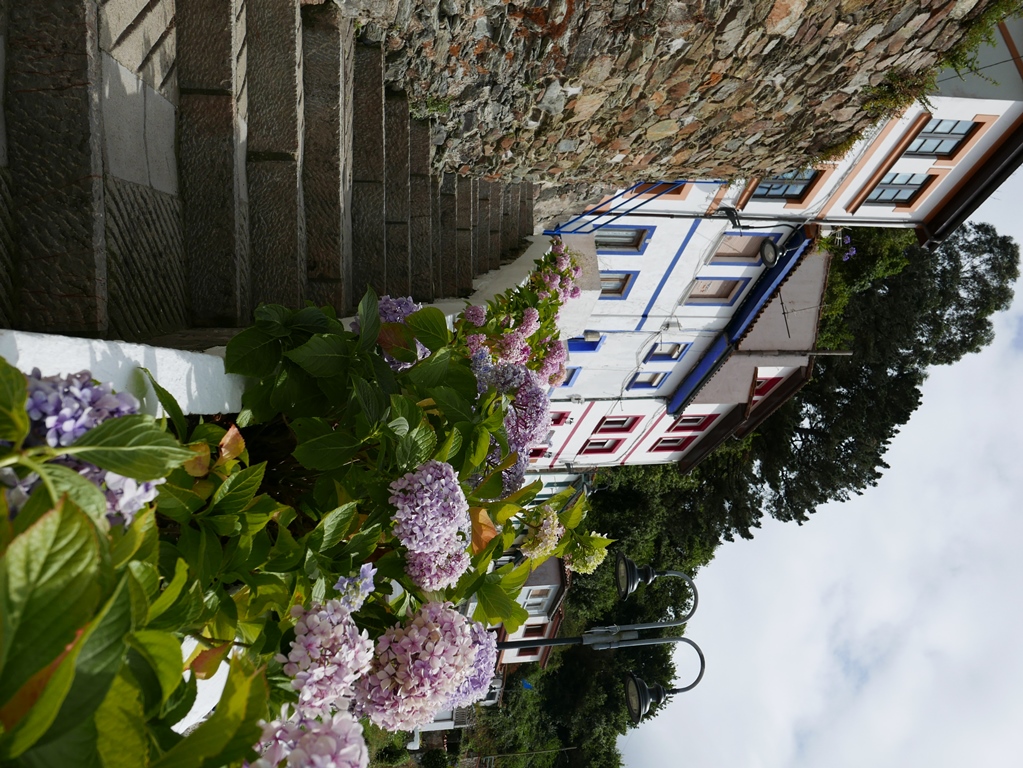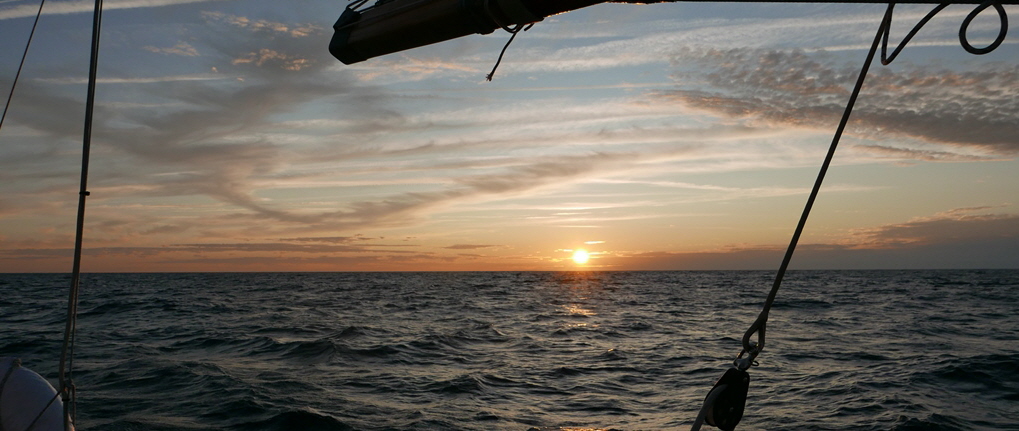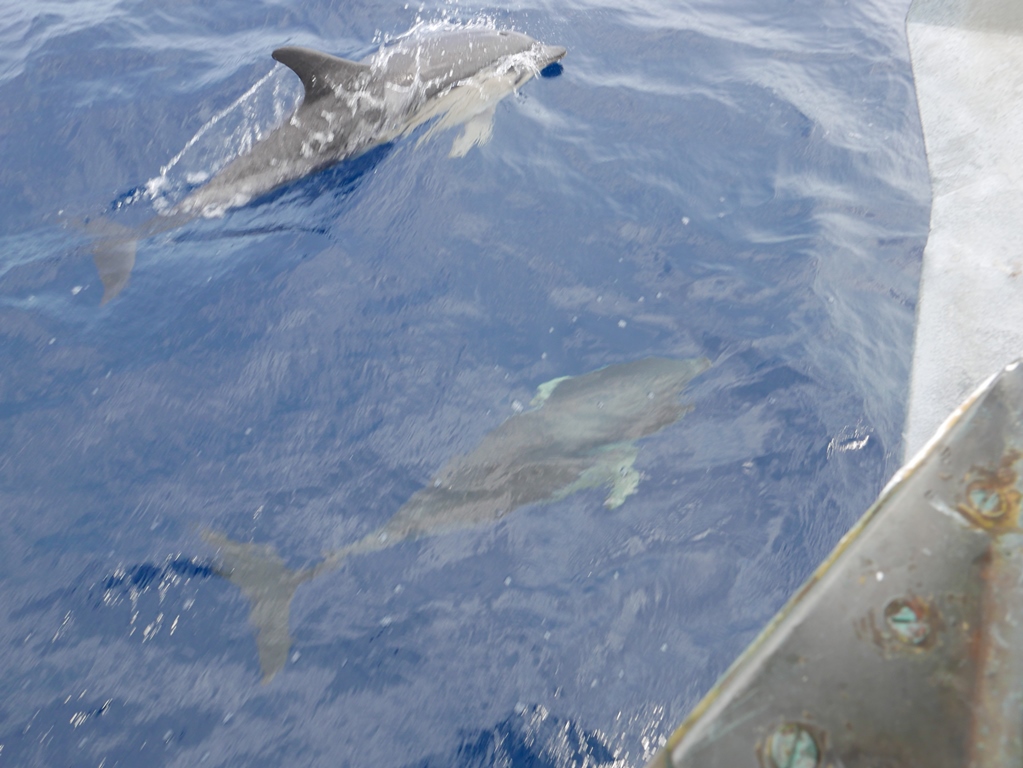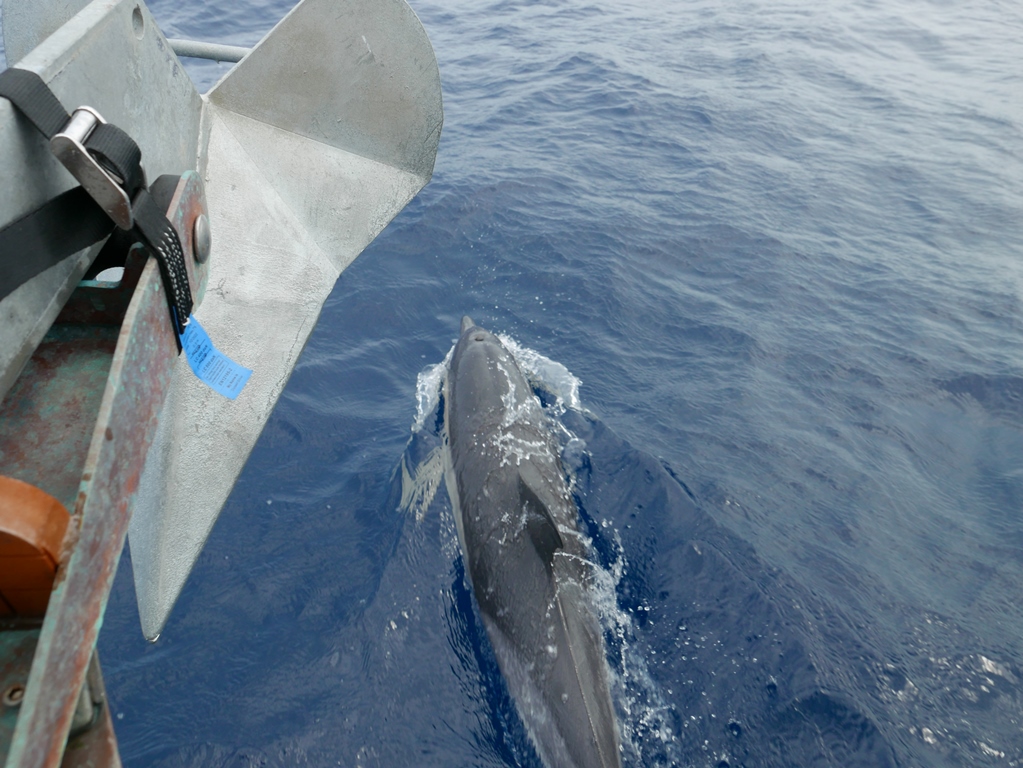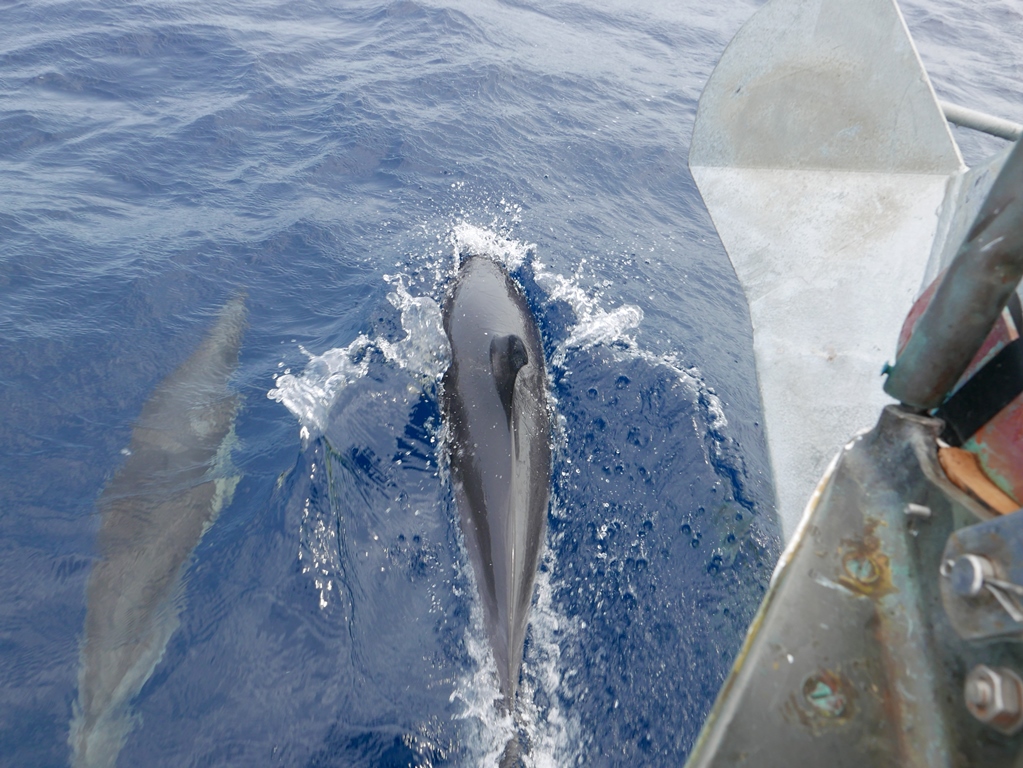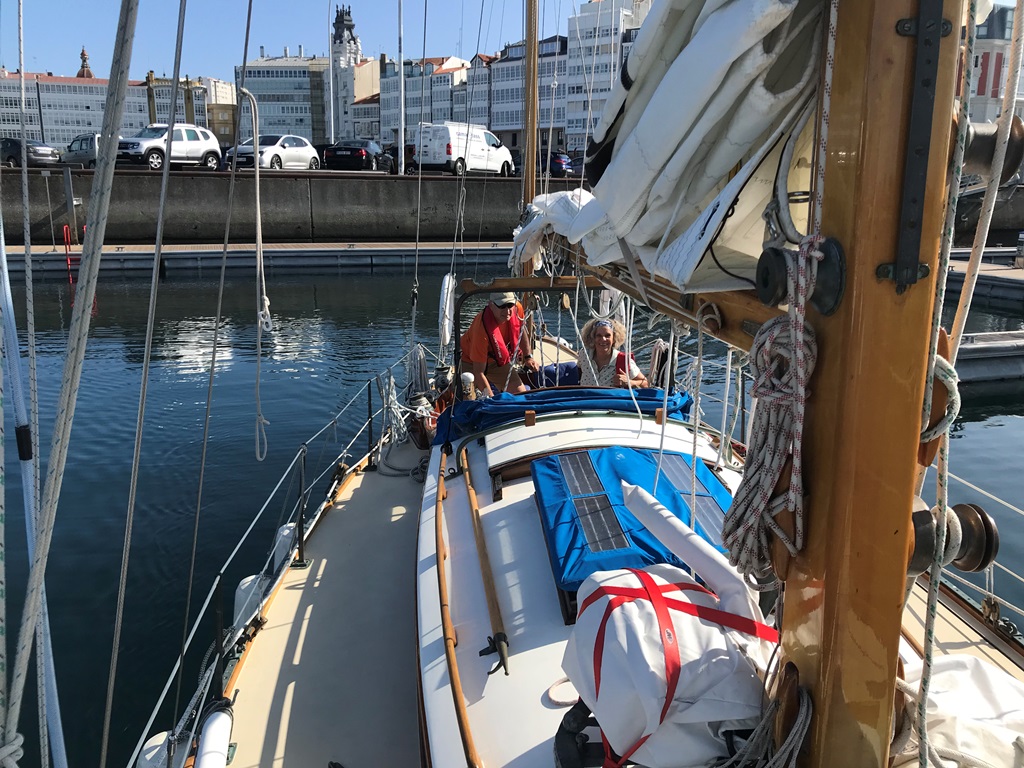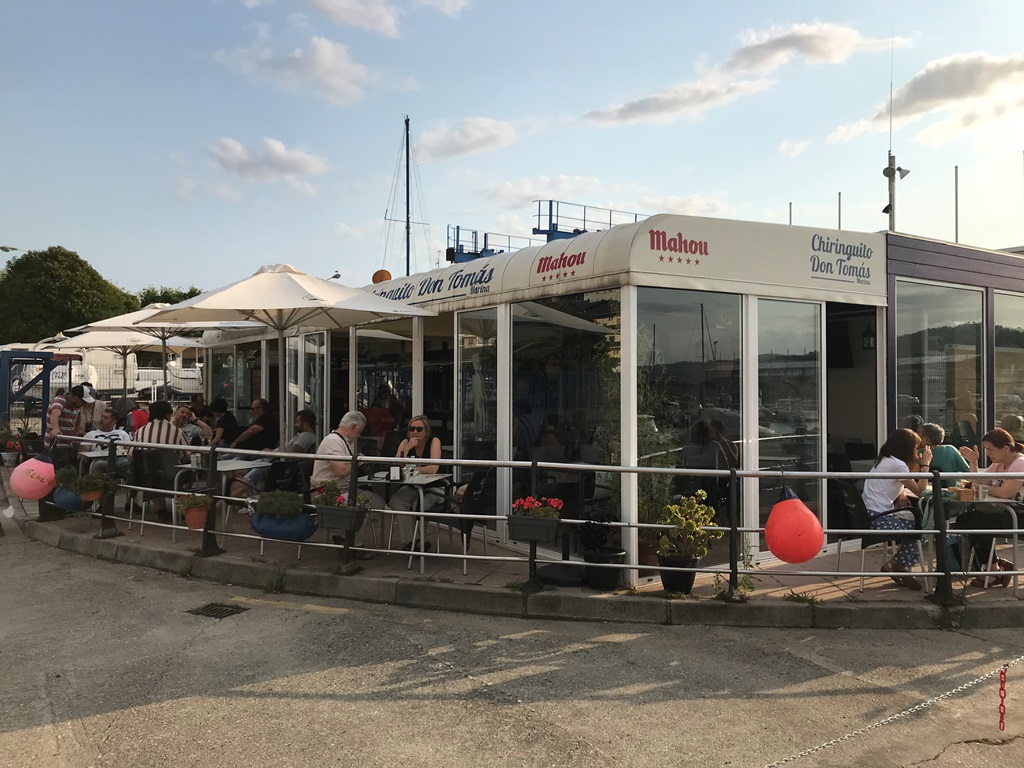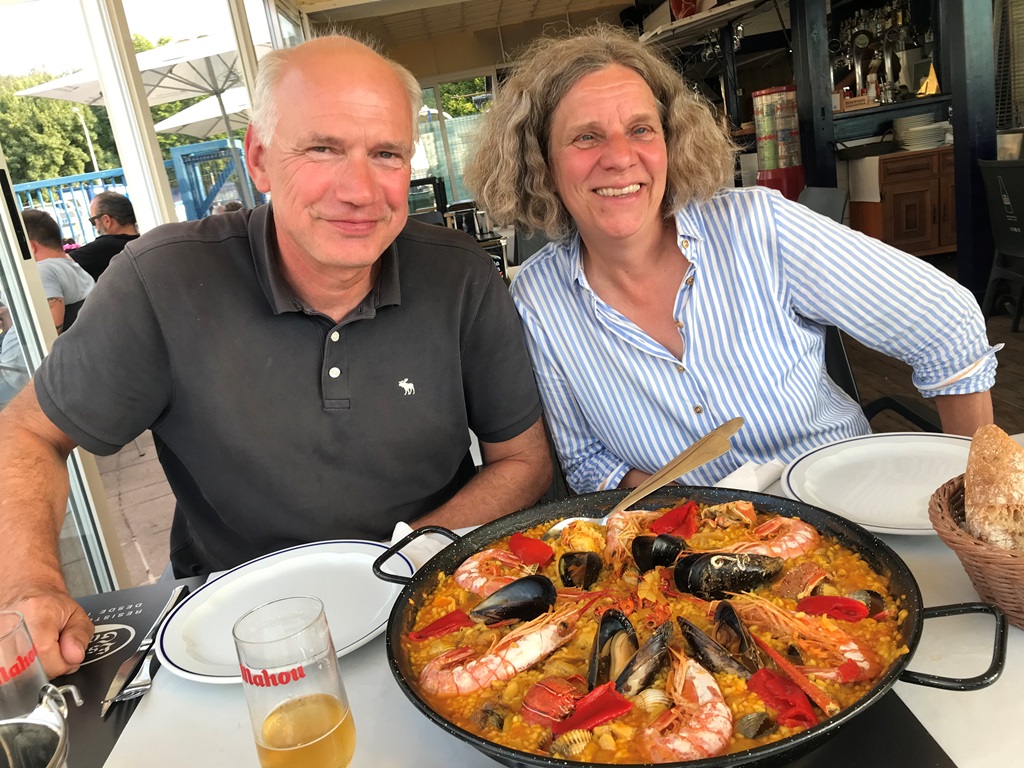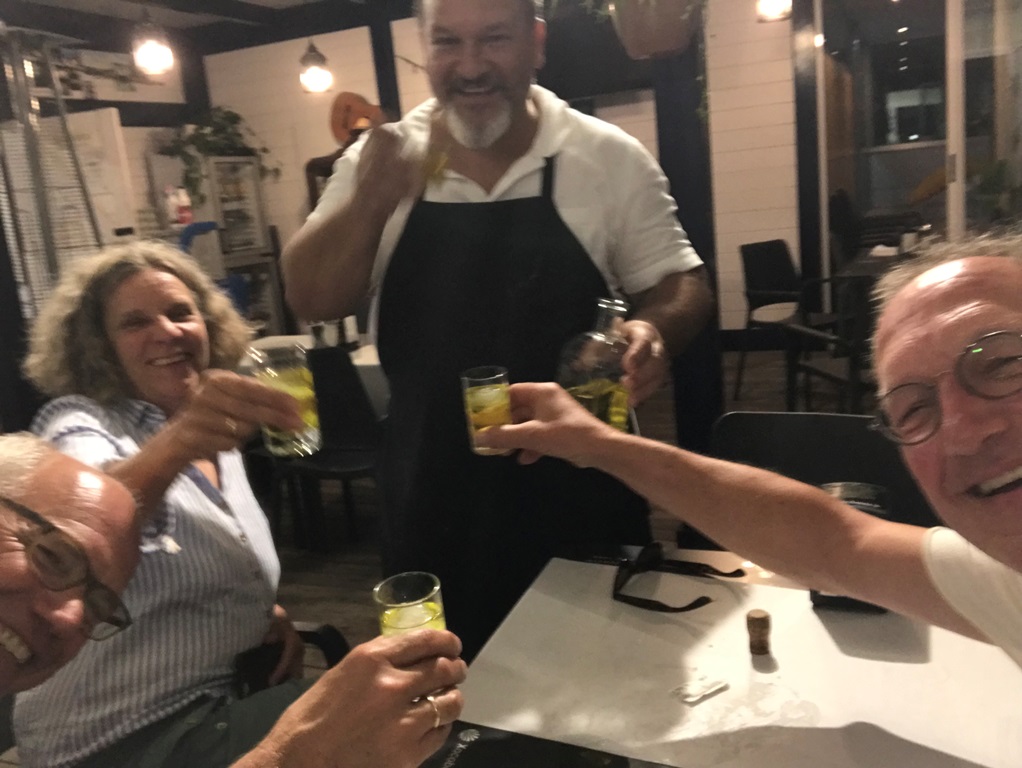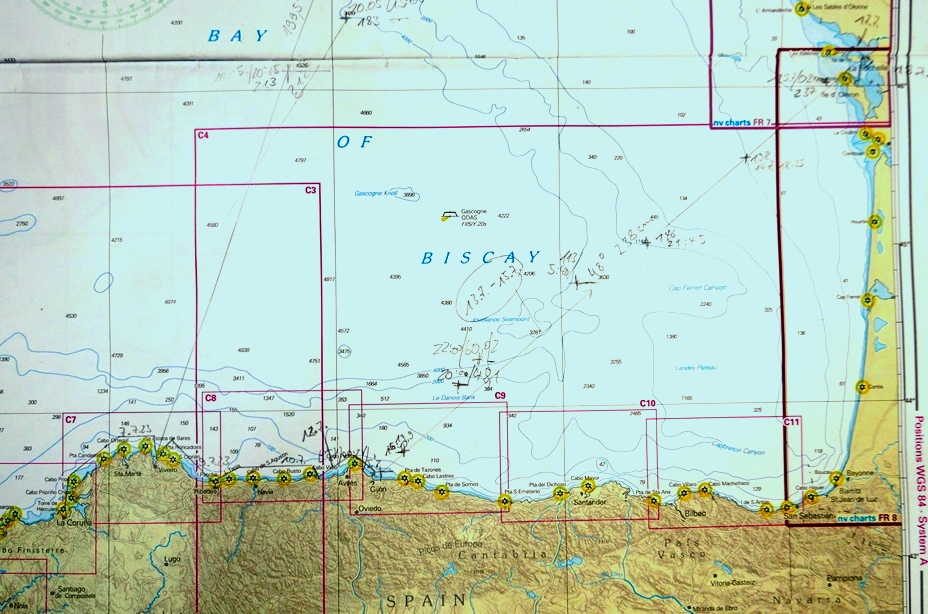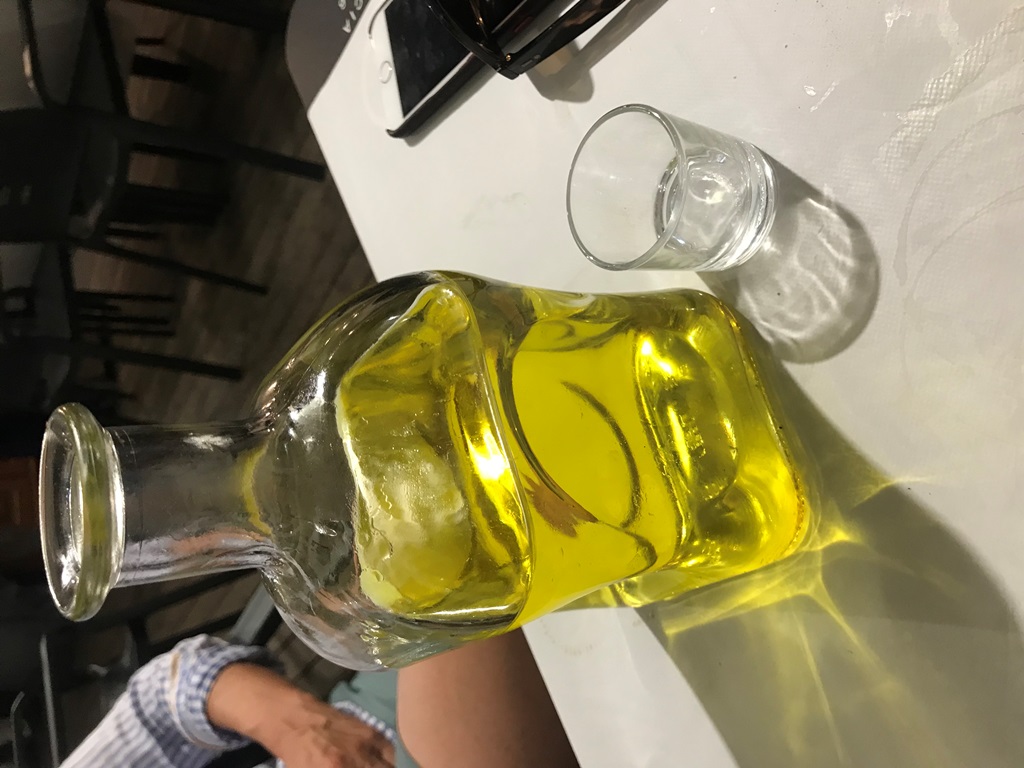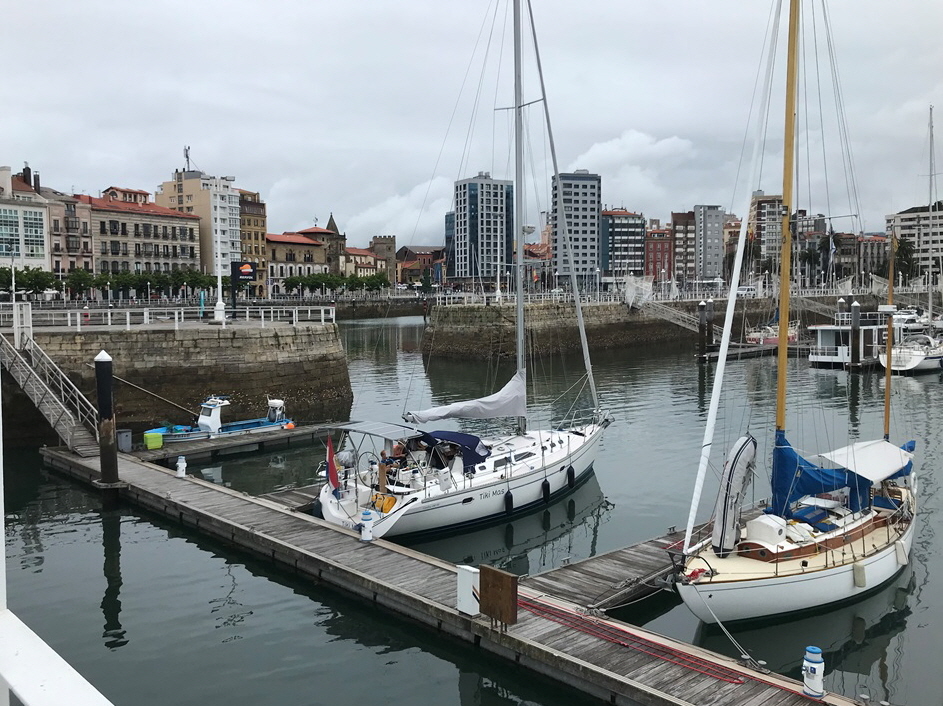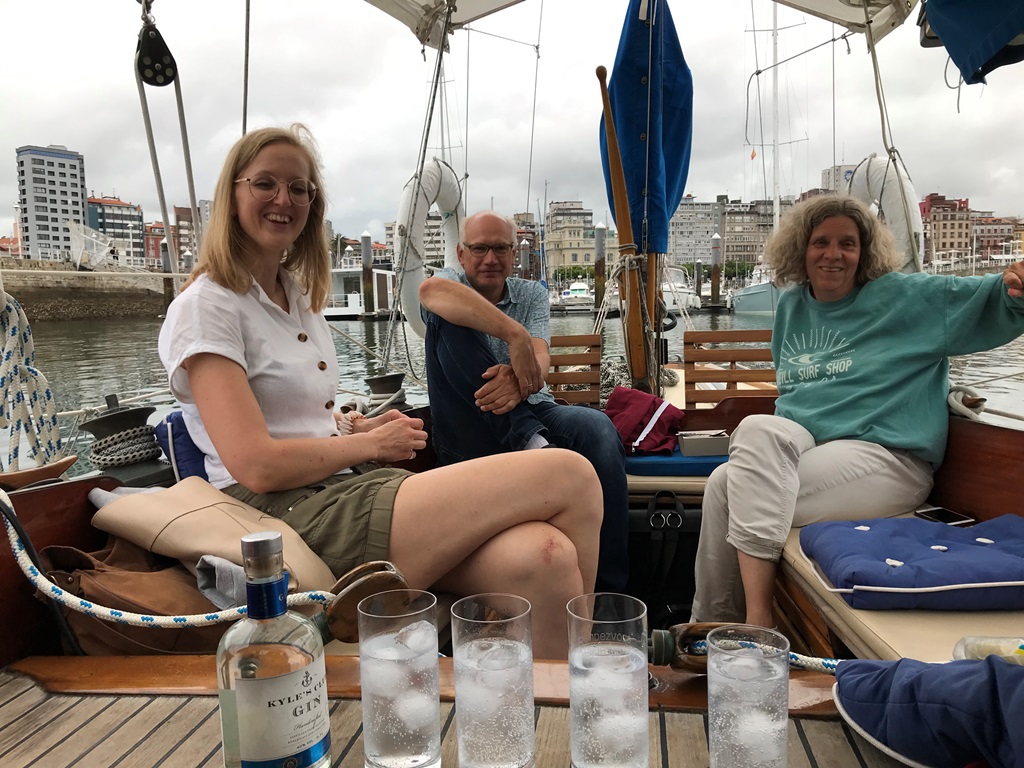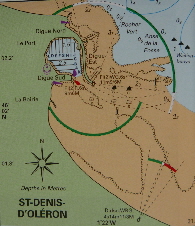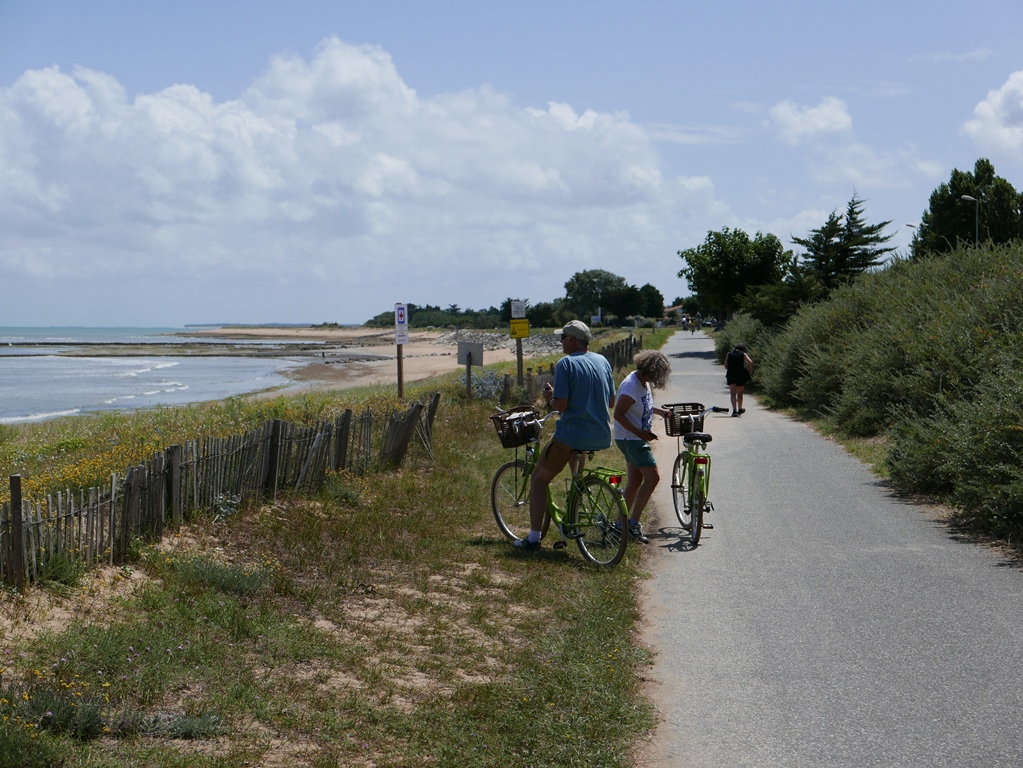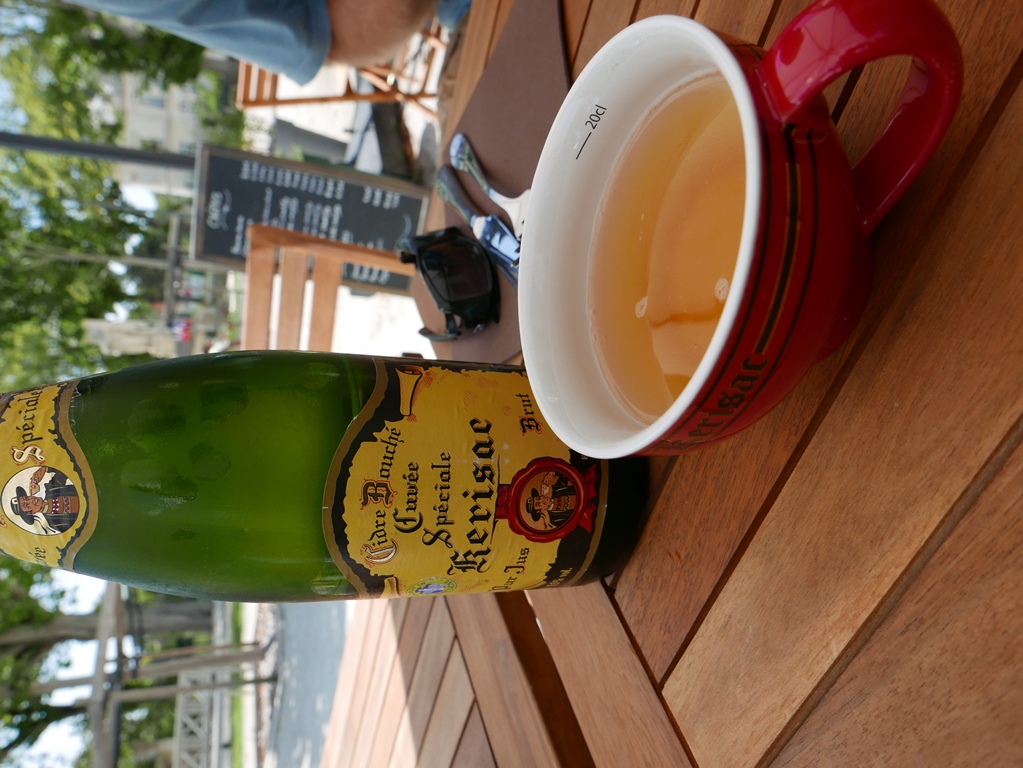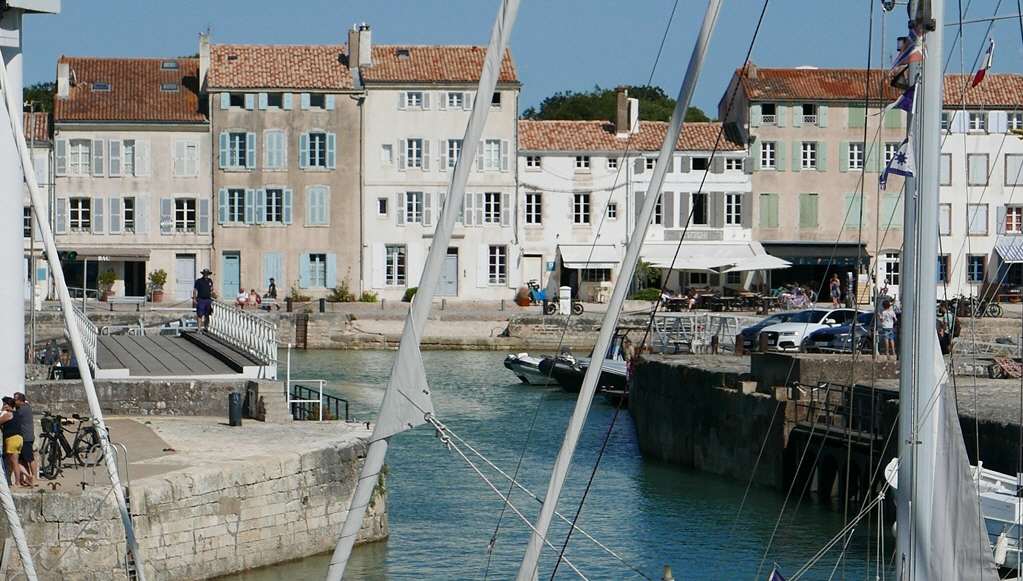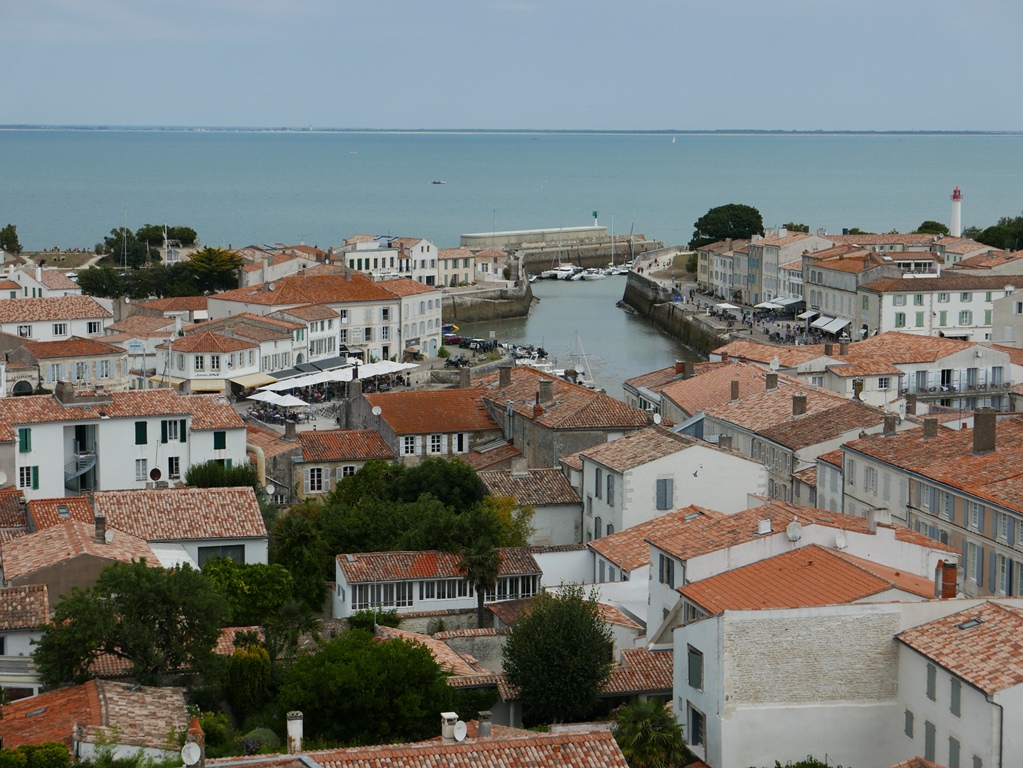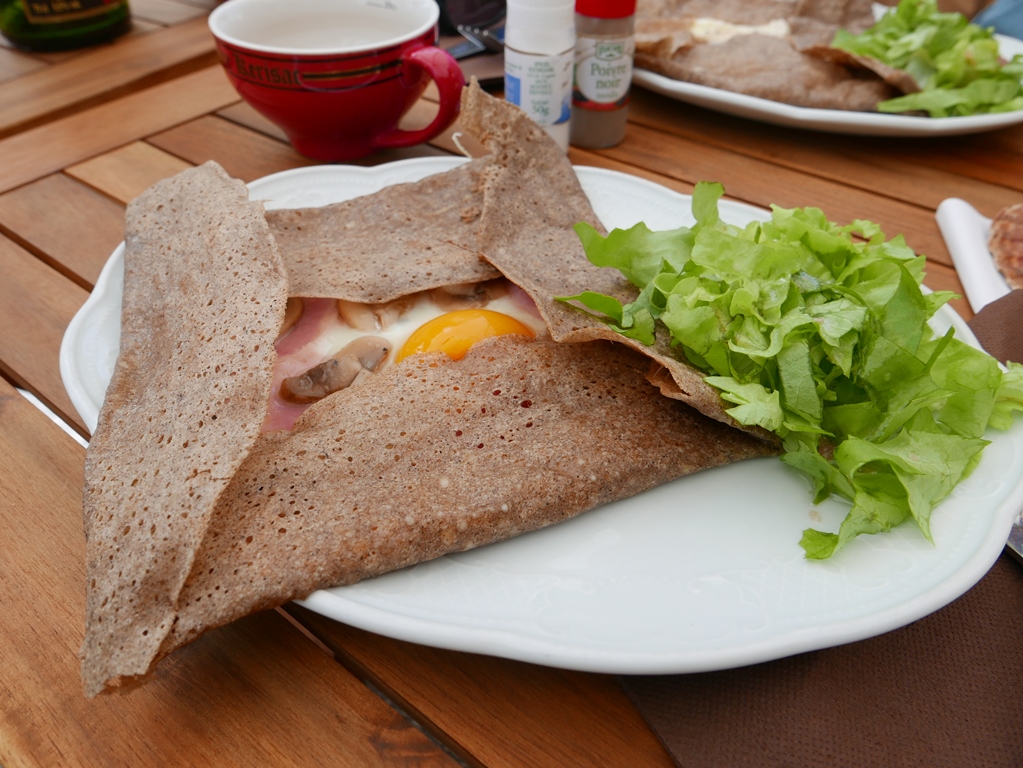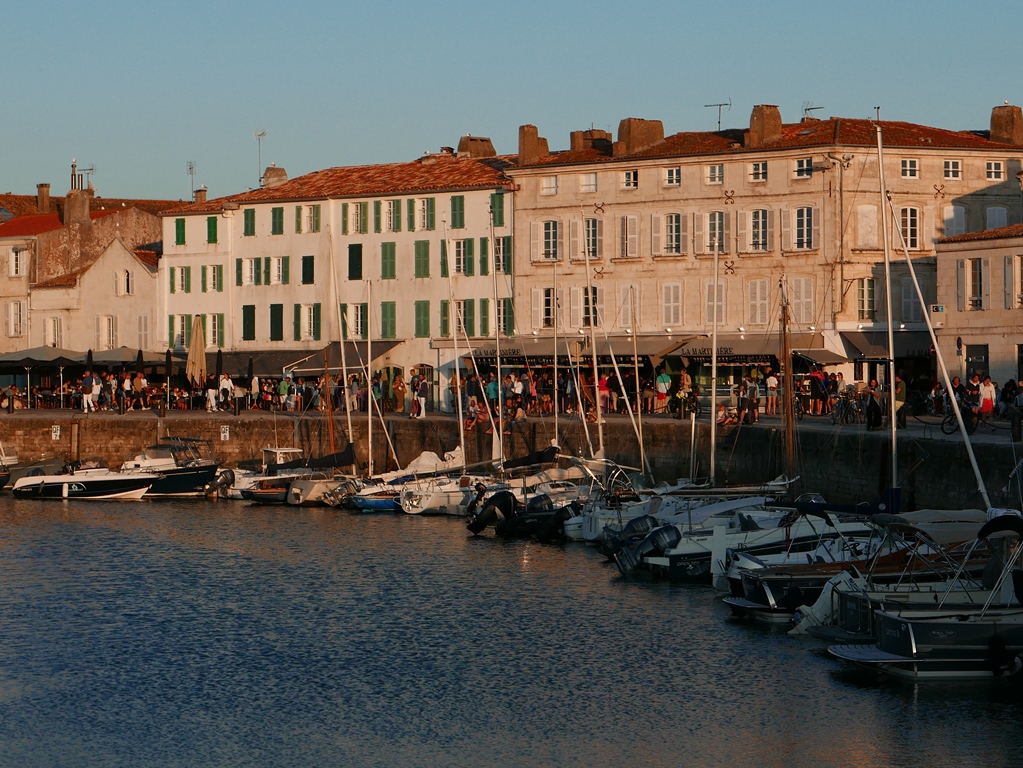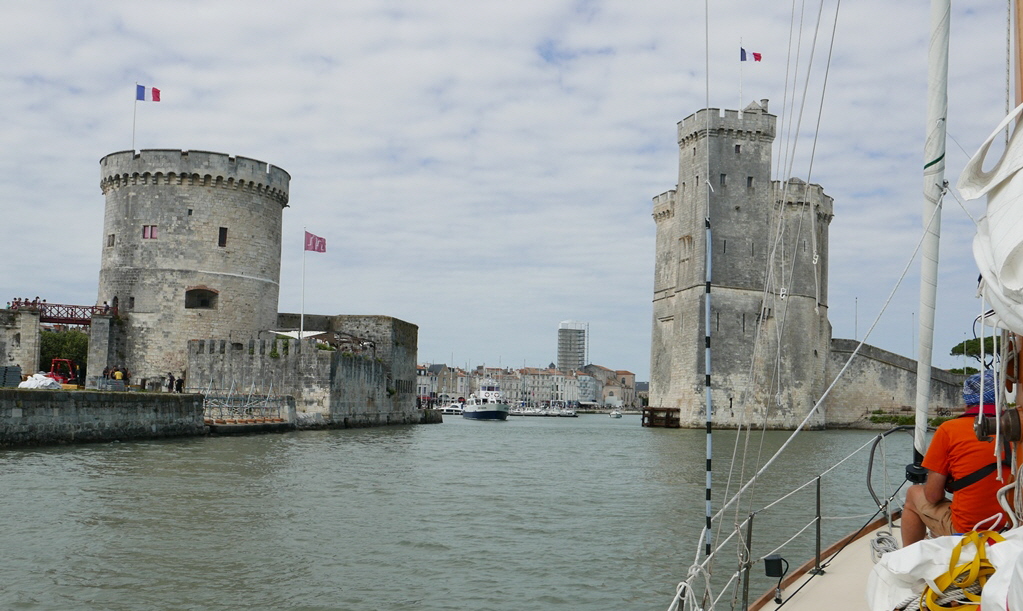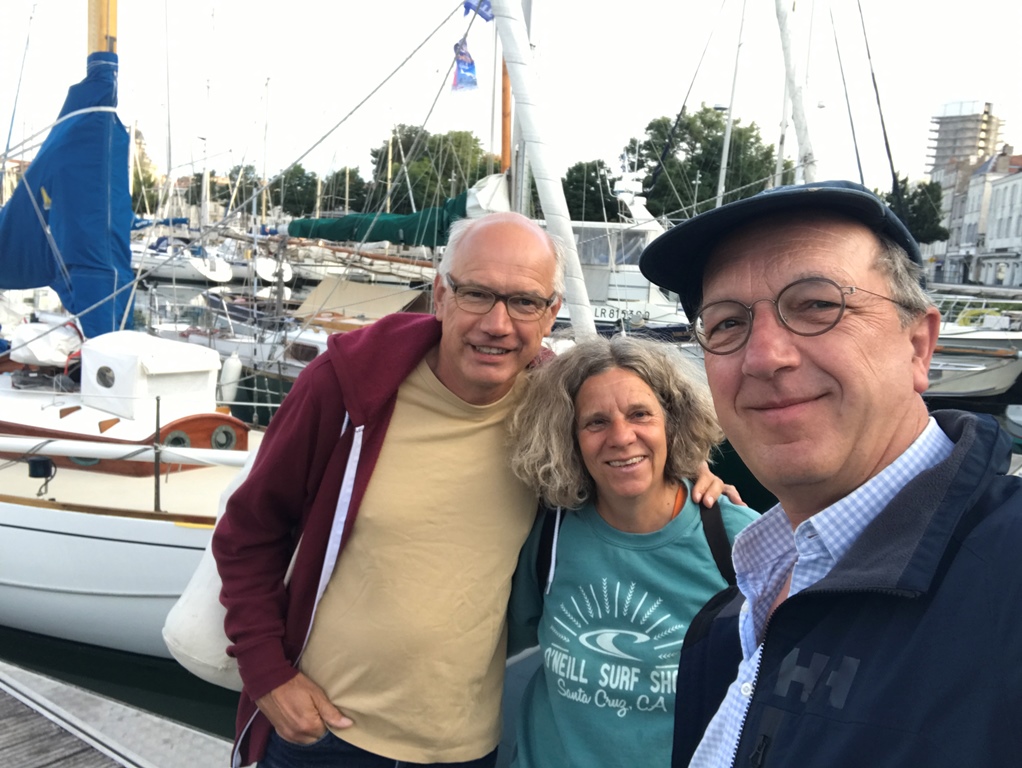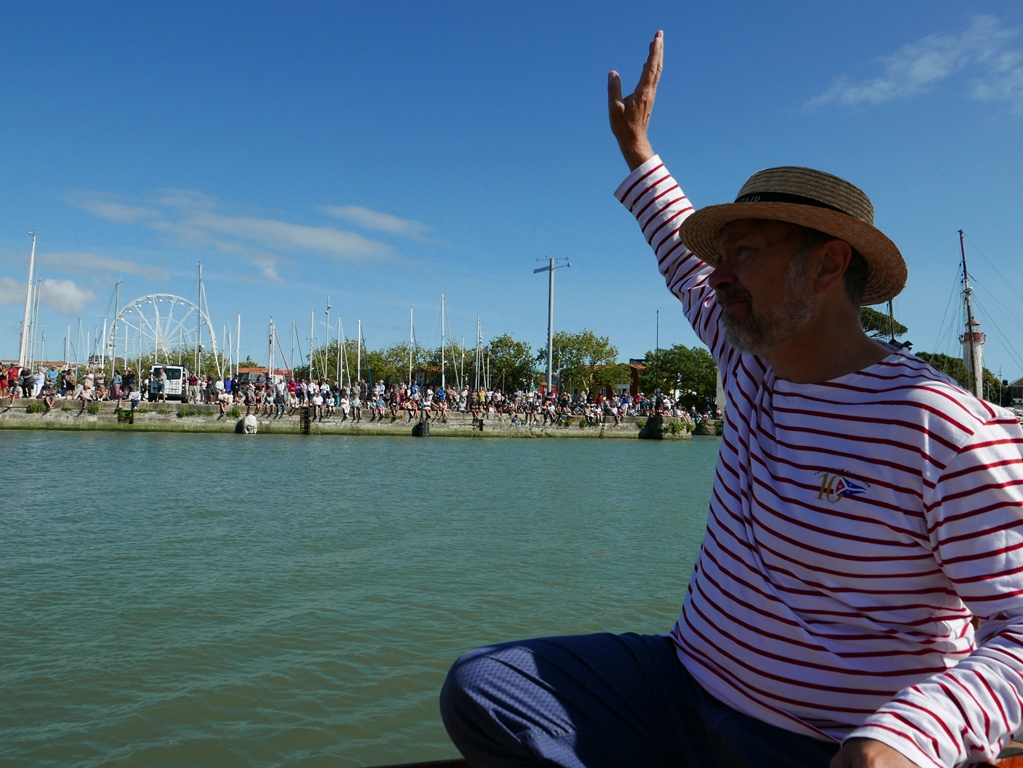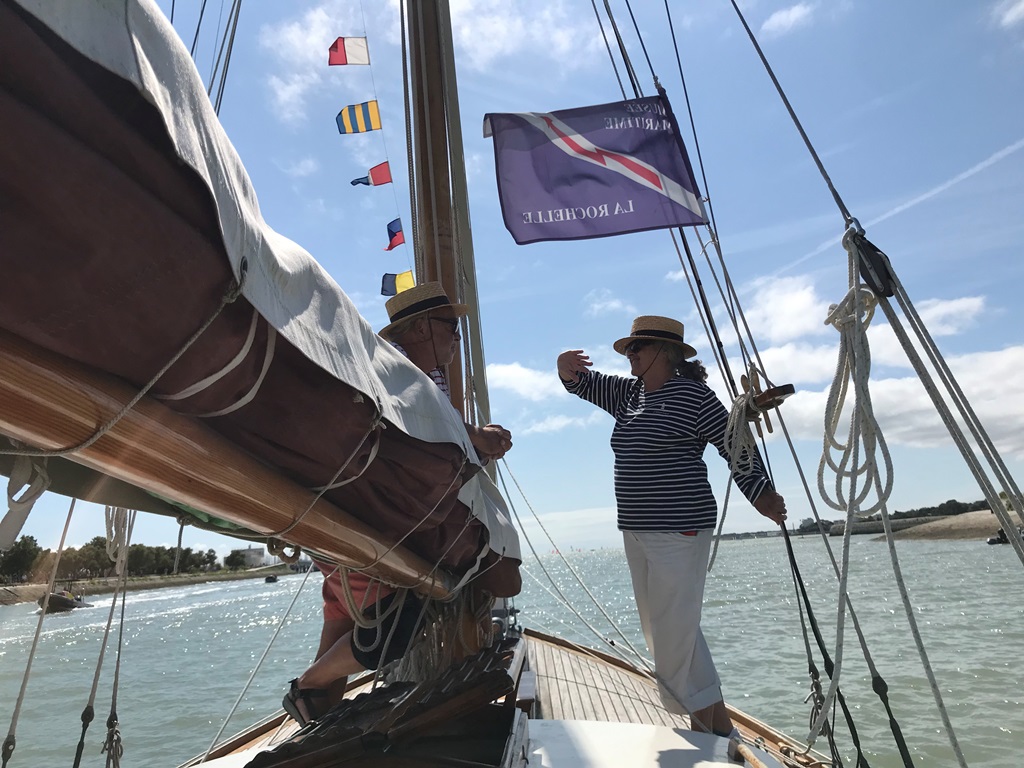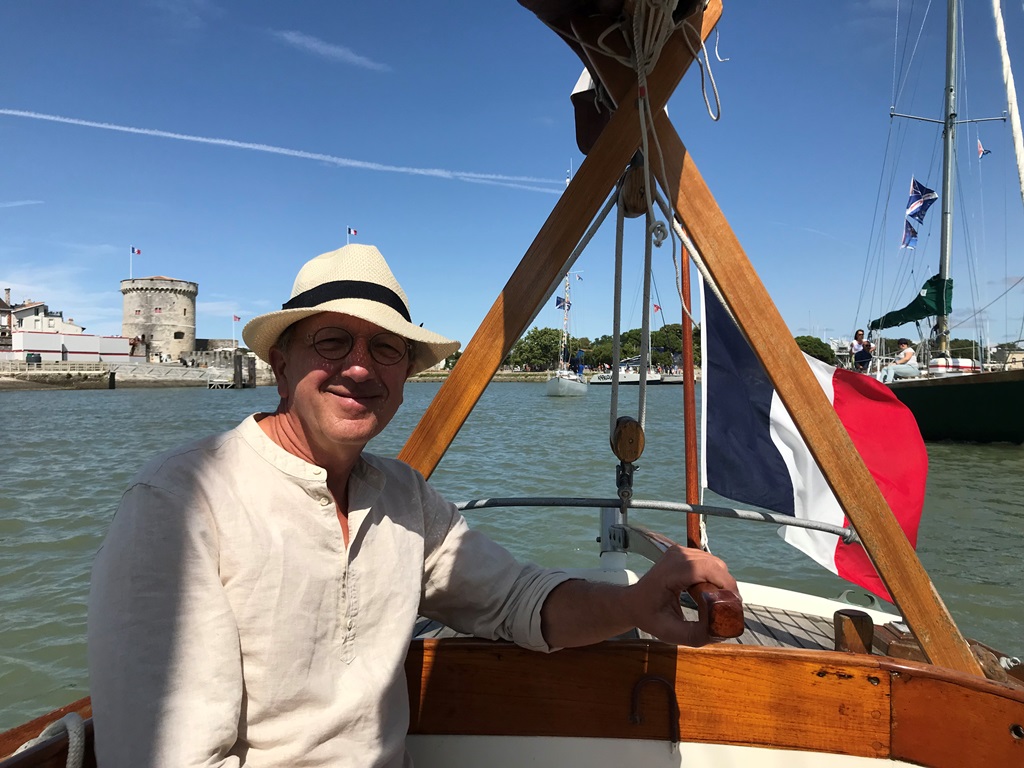|
Galicia-Asturia-Biscay and France with Crew #3
Arrived in France. The third crew is off board, so time for a summary of the two weeks with Roswitha and Klaus.
I don't really know where to start, at the sailing days with the uncountable dolphins off Galicia and Asturia? At the little Spanish towns and the celebrating people. At the small harbors in Asturia where only rarely sailing tourists come and the berths are quite rustic?
At the "little Biscay crossing", which was slightly brought forward due to the weather and also a bit longer as originally planned, where we sailed a new "Fleetwood best value" with 155 nautical miles in 24 hours, or at the two visited French islands and the charming La Rochelle.
In La Rochelle I'm moored at a jetty with classic yachts. I'm alone on board. I've washed three machines of laundry in the last few days, replaced the defective bilge pump and put a lot of clear varnish on the wood. I hadn't managed to do that in winter, wanted to do it in Spain, but it was too warm and sunny there and now in La Rochelle the weather is perfect for varnishing. However, only between 09:30 and 11:30 am, then also here too much sun, before too much dew...strolling and dreaming are not possible while painting, the varnish attracts faster than he can form runners; the wooden boat owners doing this job themselves know what I mean…
In la Rochelle I have made contacts, to the owners of the neighboring boats, have been invited on Saltaire of 1898 to a parade of all the classic yachts affiliated to the Musée Maritime. The parade is the final of the regatta from Camaret-Sur Mer near Brest to La Rochelle. It ended the day before. We were mistakenly timed in the finishing passage without noticing it.
Sailing summary of the two weeks: 9 ports, 455.1 nautical miles, 30h25' engine hours, which, taking into account the port maneuvers, amounts to about 110 nautical miles.
But now one after the other, of course only for those who want to read further and are interested in the details:
A Coruña, for me, this means saying goodbye to this friendly city and the celebrating people. After all, I was here and in the surrounding area for six weeks and now I know my way around a bit. Here I would like to come again. The negotiation of the harbor fee is then exciting. The German harbormaster Sylvia calculates at the end the favorable monthly price for the 24 nights, although I was always away in between: “Here you have to pay only when you finally leave...”
Next day we sailed in a blow to Vivero, where Roswitha & Klaus, like me also two times before, hike to the 355 meter high Mirador de San Roque. Meanwhile, I stroll through the town, where a medieval market with music and best mood invites you to stay. For the evening we have ordered mixed paella from Don Pedro, inimitably delicious. The hello is great when the host recognizes me from my previous visits and I then also give the best that I gave him and his restaurant 5 stars on Google. There the extra round of the self-distilled Orujo de Hiervas (Galician liquor of herbs) is secured. Damn tasty that stuff!
The next day brings us to Ribadeo, a quite wonderful place. Super marina, very good sanitary facilities and friendly harbormasters. By the way: we were generally welcomed and briefed, if necessary the harbormaster also helps with mooring. May be self-understanding for American yachts people, but mostly unknown in the Baltic Sea.
In Ribadero, coincidentally, the "Festival de Habaneras" is celebrated this weekend. These are the local inhabitants who emigrated in the 19th century to Latin America, especially Cuba, where they earned a lot of money from which those who stayed behind built many beautiful houses. It was also a custom that even those who came back brought a palm tree in a pot, which today decorate the gardens and parks in respectable sizes. In the evening a Cuban band plays, whose singer is Eliades Ochoa, the last living member of the "Buena Vista Social Club Film Cast".
Ribadero is the last place in Galicia, on the other side of the river Asturia begins.
In Luarca, 28 nautical miles away, we start the next day for the first time seriously to plan the further course of the journey. Roswitha & Klaus have booked a train from La Rochelle to Paris that leaves end of the coming week. Nevertheless, the two are tireless in reading the various travel guides. Also with the help of the Imray Coastal Handbook for the "South Biscay" the most interesting destinations are identified. Lying in Luarca pure fishing harbor is extremely rustic. The inner harbor is reserved for fishermen. For guests, there are five moorings in the outer part of the harbor behind the enormous breakwater. The special thing is, that at the mole are floating boxes are attached on rails to which one the other side moors. To do this, the dinghy and a long line, preferably floating line, must be clear. Unfortunately were not ready for this maneuver. At the dinghy the paddles are missing, the line is in the stern, really long and snagged between the beach umbrellas and other interesting things that are all pushed into the stern. Well, in the end we are of course moored and go with the dinghy to a sightseeing tour in the village. There is no direct land access, also no sanitary facilities, but also no harbor fee.
The voage continues to Cudillero, at www.spain.info it says: "Cudillero is a picturesque little fishing port at the foot of a mountain. It´s hanging houses with colorful eaves and windows are remarkable, located on a cliff arch around the harbor. The town has a route to different viewpoints, of which the lighthouse, La Garita, La Atalaya or El Pico are particularly noteworthy. The two most important buildings are the 16th century Gothic parish church, where you can admire Baroque carvings, and the Humilladero chapel, which is the oldest building in the village. The fisherman's taverns, located in a paved little square by the sea, are the main attraction for tourists." And tourists are plentiful here, though mostly Spanish.
Speaking of moorings, there are two guest berths at the floating dock on the inside of the pier. Both are occupied....for other guests, there are moorings with bow and stern lines. Must be, because otherwise moored boats would swim uncontrolled with the tidal current and possibly wind influence in the port. The first mooring we get, however, is slightly defective, has only one line on it. In the meantime we drift on another and that is then complete. Shore access again only by dinghy!
We continue our journey for about 29 nm to Gijon. In Gijon we meet Mareike, the daughter of acquaintances from our home district in Kiel. Mareike has been living in Spain for 10 years and has just moved from Madrid to Gijon: more pleasant climate, strikingly lower rents. Mareike leads us through the small old town to a trendy restaurant. Here there is the Spanish Cidre by unerring pouring from maximum arm height in the glass only unfolds its proper effervescence. This must be drunk then but also on Ex, because otherwise the bubbles turns out too quickly. There is also always only a good on Ex drinkable amount, then comes the next turn and so it always goes in the round....if you are not careful, you might be complete drunken very soon.
Unfortunately, we are preoccupied not only with the menu selection and the cider, but also with further travel planning. On the Bicaya a bad low is brewing. We have the chance to sail with good speed in front of it, maybe 20-25kn half wind with increasing wave. For sailing on the Biscay, the wave forecast is nearly as important as the wind forecast. With the low moving through, "Windy.com" predicts 3-4 meters waves during the low passing. This we would have from the side. In conjunction with the wind, those waves would also break. No conditions for Fleetwood. Moreover we would sail up the continental shelf on the French side. The alternative would be to sail two more days to the east and then, after the low with the decreasing swell, motor the 200 nautical miles from Santander. Not a good idea. Actually, we wanted to call at two absolutely recommended fishing villages on the way to Santander. Well, sometimes the weather sets the corner points, especially since Roswitha & Klaus have to get the booked TGV in La Rochelle on Friday! So the decision is made.
The next noon we set off for the "little Biscay crossing" to the Ile d' Oléron off La Rochelle.
250 nautical miles. It will be a great ride, many dolphins on the first miles, blue sky and two wonderful sunsets in front of the clouds of the slowly coming low pressure.
In St.-Dennis-d'Oléron we enter at 03:30 without waiting in front of the harbor. Why without waiting time? St.-Dennis is the first harbor for us, which is secured by a built barre from falling dry at low tide. This means that the harbor can only be entered when the water is high enough above the bar. We arrive just in time at high tide. This can be calculated and read in the "Reeds".
Speaking of navigation: I will report on this in a separate report at the end of the trip.
The Ile d'Oléron awaits us with the wonderfully sheltered harbor of St.-Dennis-d'Oléron. We take a day in the harbor to relax, rent bicycles and explore the island. Here is really tourism, a huge campground in the village and on the Atlantic side a fine sandy beach behind a wide strip of dunes. In Saint George d'Oleron we drink French cider and eat Galette. Later still a bath in the Atlantic and the day is perfect. After Corsica, Île d'Oléron is the second largest island in metropolitan France, almost twice the size of its neighbor Ile-de-Rhe. Easily accessible via a toll-free bridge, the family-friendly island with its mild climate is very popular with summer vacationers.
To the Ile-de-Rhe we sail the next day, it is only 18 nautical miles, today we have only 2-3 Beaufort, thus the sailing time fits pretty well with the high tide times. On the Ile-de-Rhe the inner harbor of St.-Martin-de-Rhe is protected by a gate from falling dry. Outside are some waiting moorings and at opening time a nice row of boats is on the way inside. There is first of all chaos, as with the bus, when those who want to get in first of all properly obstruct those who want to get out. We drive behind and then again out, because also still another excursion steamer departs. At the gate stands the harbor master, speaks perfect English with us: "Length, width, depth? How many nights?..." a glance at the list: "Place 101, far back, the swimming hilt to Bb." Perfect announcement! Almost all other boats are in front in packs. It has also advantages if the boat is only a good three meters wide.
Here, too, fine sandy beaches, dunes, pine forests, vineyards, salt marshes, more than 100 kilometers of bike paths, small harbors, snow-white houses, lighthouses, forts and a citadel, oyster and mussel farms, freshly caught fish, it's all there. We stay in the town, which has an incredible charm due to its originality, the harbor front with the many restaurants and small streets.
We stay only one night and sail the next day within a high tide the 12 nautical miles to La Rochelle.
I have always wanted to go here, even as a child I was fascinated by the name and the history of the city's independence. La Rochelle is the end of the sailing trip for Klaus and Roswitha. But before that we spend two more days in the city. Sightseeing. There is more than enough to see. The city remained largely undamaged during the Second World War. The U-boat bunker was far enough out of town and at the end of the war there had been a standstill agreement between the German commander and the French negotiator. This "Convention of La Rochelle" resulted in the city and port facilities being surrendered intact after the German surrender, while other Atlantic cities such as Royan were still completely destroyed in April 1945 shortly before the end of the war.
La Rochelle is a city you can fall in love with. Small streets, music, restaurants, cafes, a market hall and much more. I spend a good week here; finally get to do the clear varnish work on the natural wood, which came too short in the winter. In addition, a week of French intensive course so that in the coming weeks the ordering in the restaurant also might work.
I will report about La Rochelle in the next essay!
|
